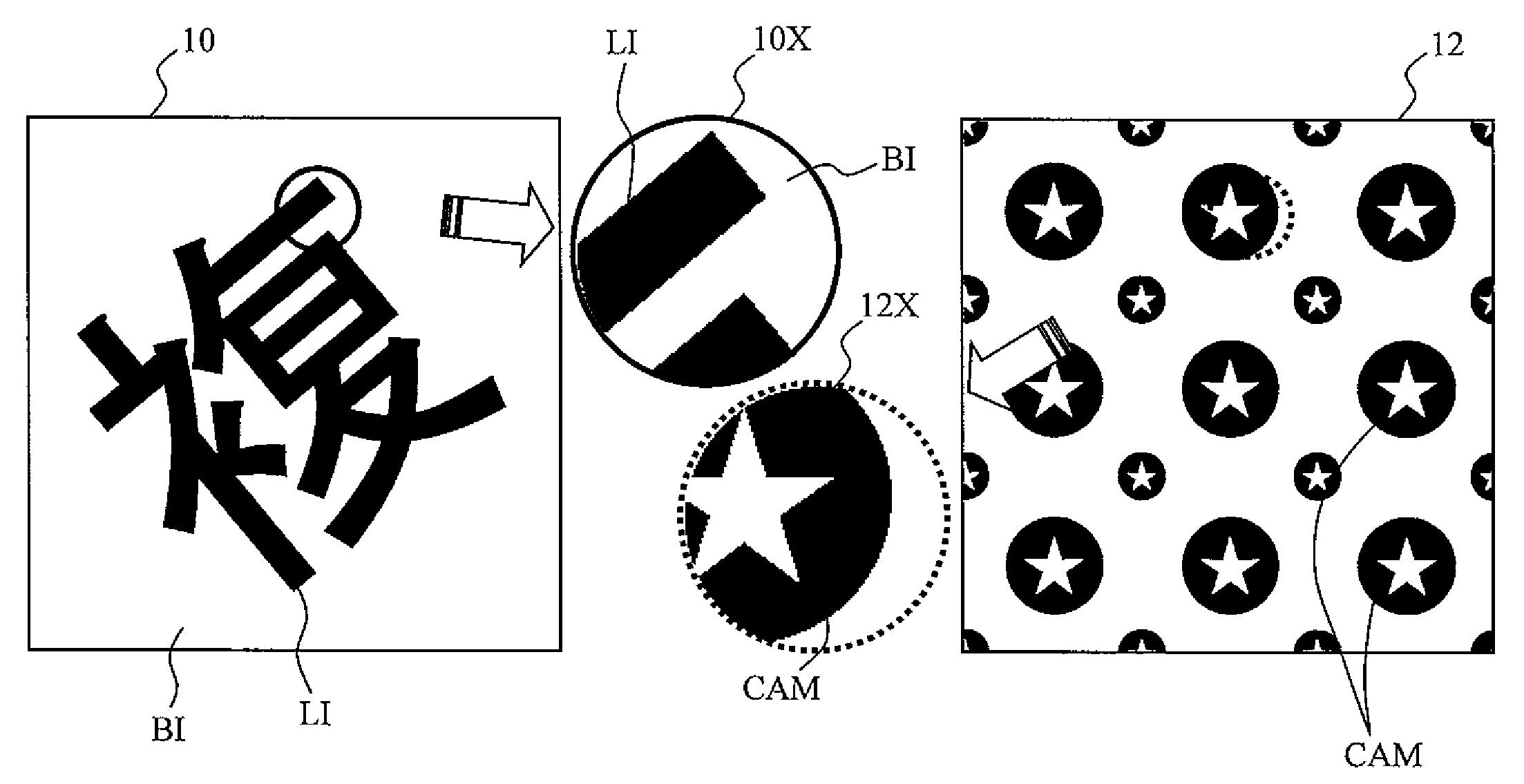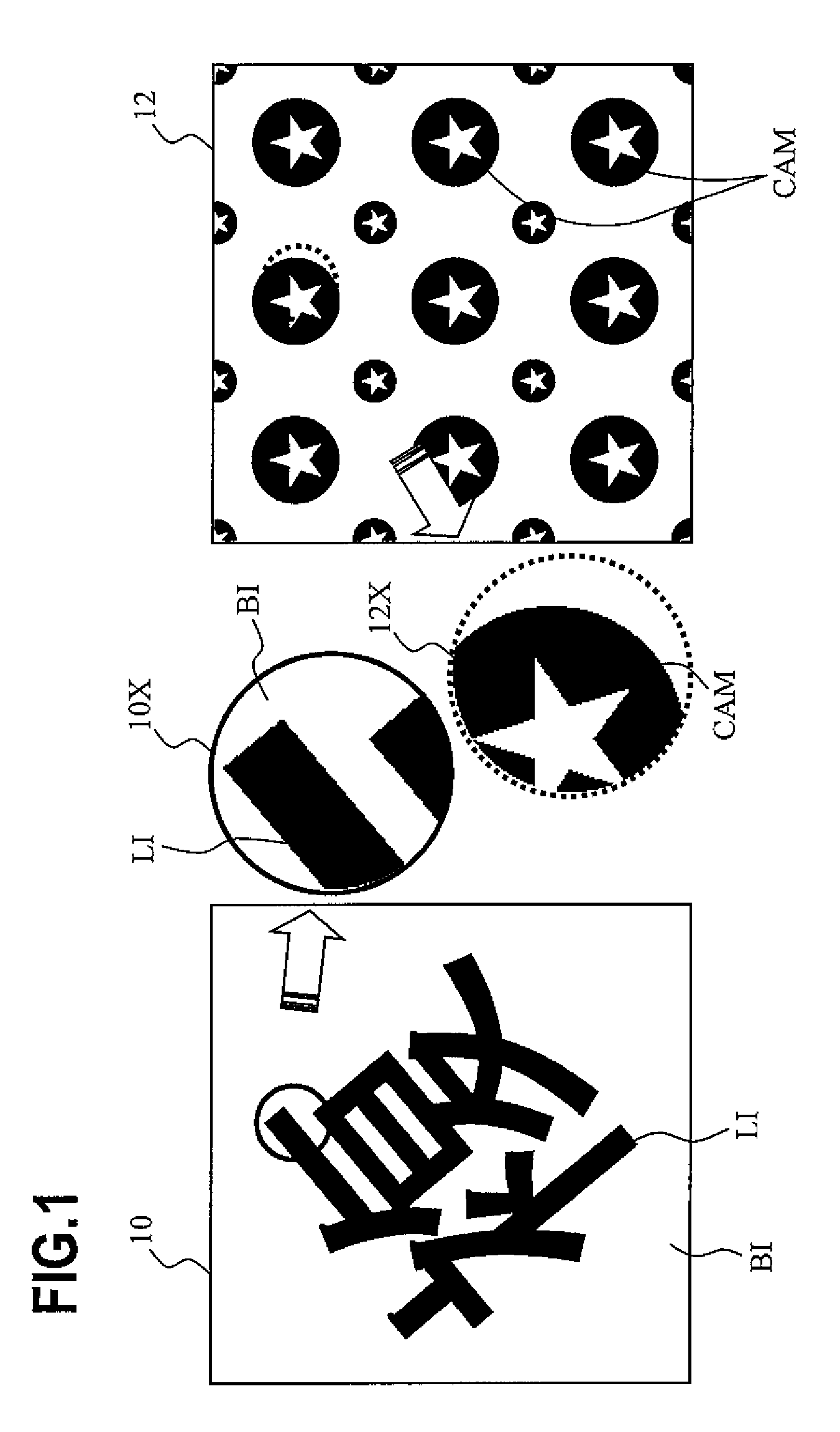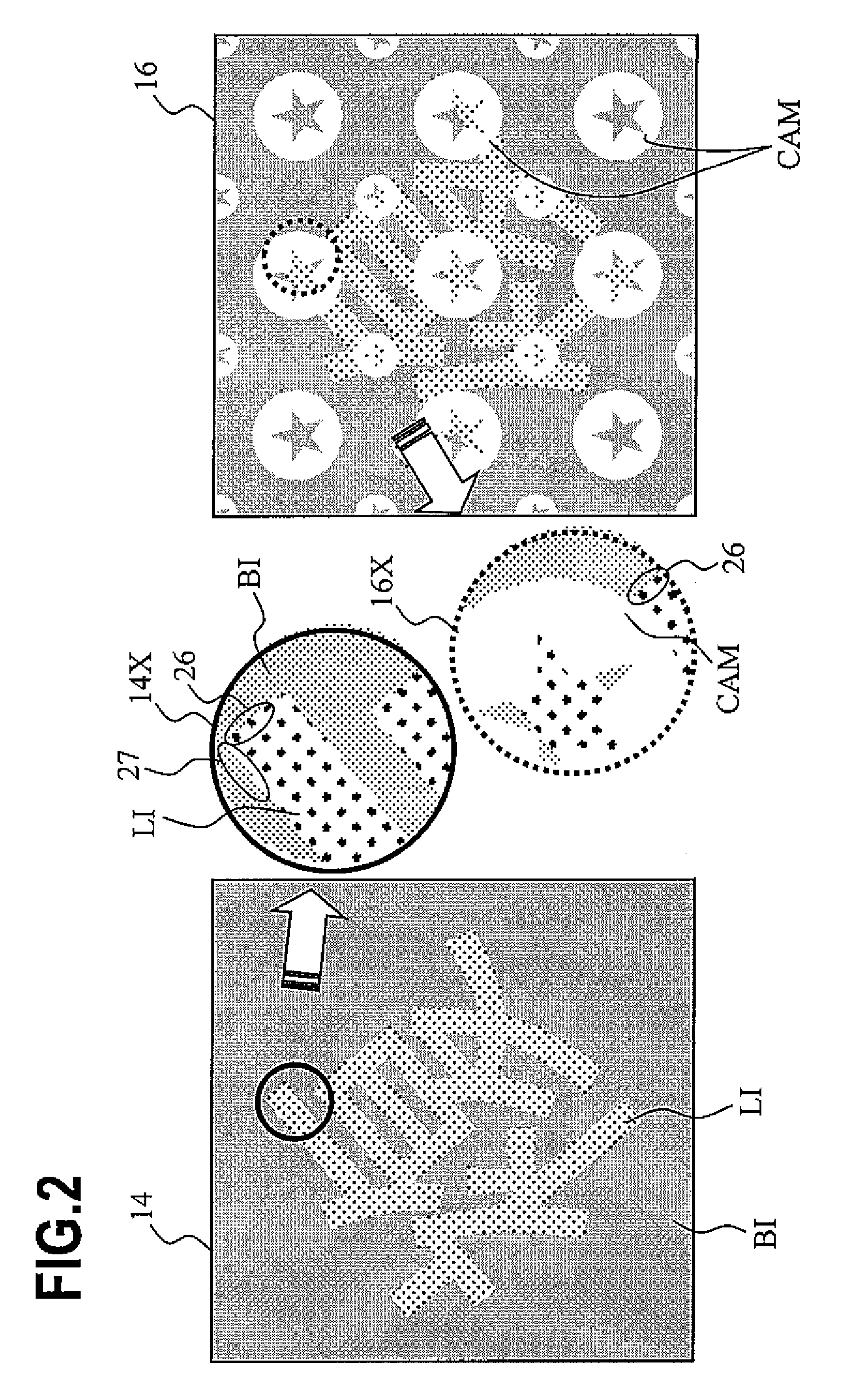Tint Block Image Generation Program, Tint Block Image Generation Device, and Tint Block Image Generation Method
a technology of image generation and tint block, which is applied in the direction of instruments, digital computers, computing, etc., can solve the problems of high concealment capability of latent image in the original and high identification capability of latent image in the copy, and cannot be implemented, so as to maintain the concealment increase the identification capability of latent image in the copy, and increase the output density
- Summary
- Abstract
- Description
- Claims
- Application Information
AI Technical Summary
Benefits of technology
Problems solved by technology
Method used
Image
Examples
examples
[0124]The following are examples when the tint block image is generated using a pair of the latent image portion dither matrices 33-1, 33-2 or 33-3 and the background portion dither matrices 34-1, 34-2 or 34-3 shown in FIG. 7, FIG. 8 or FIG. 9, and the tint block image of the copy is generated by simulation to allow the pixel dots of the tint block image of the original to disappear at a predetermined ratio. In simulation, the image reproducing capability, which depends on the input resolution and the output resolution of copying, has a limitation, so a size of large dots (half tone dots) is decreased to a first ratio, and a size of small dots (half tone dots) is decreased to a ratio smaller than the first ratio, and micro dots (pixel dots) are allowed to disappear at a predetermined ratio.
[0125]FIG. 16 shows an original and a copy of the tint block image of the example. FIG. 17 is an enlarged view of the original and the copy of the tint block image. In FIG. 16 and FIG. 17, the bac...
PUM
 Login to View More
Login to View More Abstract
Description
Claims
Application Information
 Login to View More
Login to View More - R&D
- Intellectual Property
- Life Sciences
- Materials
- Tech Scout
- Unparalleled Data Quality
- Higher Quality Content
- 60% Fewer Hallucinations
Browse by: Latest US Patents, China's latest patents, Technical Efficacy Thesaurus, Application Domain, Technology Topic, Popular Technical Reports.
© 2025 PatSnap. All rights reserved.Legal|Privacy policy|Modern Slavery Act Transparency Statement|Sitemap|About US| Contact US: help@patsnap.com



